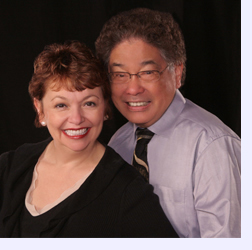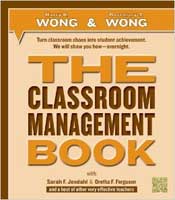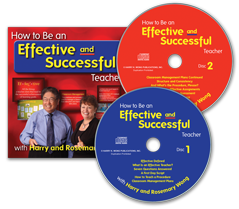|
 |

Special to the Gazette
December 2011/January 2012
The Importance of Culture
The Background This is a story of hope—where there is none, perseverance—where negativity abounds, and endurance—so that every child has the opportunity to grow, learn, thrive, and achieve in a neighborhood school.
The Greeting Before School Chelonnda arrived at Phoenix Elementary School in Detroit in February 2010. What she saw was total chaos. First, students had to enter the school through a metal detector while lined up outside the school in freezing winter weather. Once inside, she saw students running up and down the halls, teachers were screaming at kids, and doors were slamming. There was no discernible start of the school day. There were no bells, no morning announcements, no Pledge of Allegiance, nothing except the humiliation and greeting of a metal detector.
The leadership was invisible as the principal was rarely seen. Academically, Phoenix Elementary School is the second lowest achieving school in Detroit, which by default makes it the second lowest achieving school in America. It’s known that when children come to school from a home or neighborhood environment that is chaotic and unpredictable, they thrive best and succeed in a school that is structured, organized, and CONSISTENT in how the classrooms are run. Yet, Chelonnda saw no organization, no structure, no rules, no procedures, no lesson objectives, basically no culture of consistency that would serve as a pathway to success for the students and the teachers. The students were left each day to flounder and survive in whatever was the prevailing environment. Children and parents hoping to find a sanctuary at the school, only found more chaos to support their already chaotic lives. The After School Faculty Meeting Chelonnda anxiously awaited the 3 P.M. meeting when she could meet and address the entire staff. A catering company had come and set out two different types of lasagna, garlic bread, a wonderful salad, several types of salad dressings, dessert, drinks, and even a bowl of mints! She had never seen a spread like this for a faculty meeting and couldn’t believe how nice it was. Then 3 P.M. came and went, so did 3:10 and 3:30. Finally around 3:45 the meeting was ready to start. During that time ten teachers and aides (out of 24) showed up . . . and four of them left after they finished eating. The principal did not come to the meeting. However, the assistant principal, Shalonda Byas, and the special education teacher/planning committee/budget director/curriculum coach, Jeannine Lesch, came, stayed the entire time, and took careful notes as Chelonnda shared what she did in her classroom that created success for her and her students. Day 2 The next day Chelonnda visited classrooms and the chaos continued. Students were yelling, throwing paper wads at the teacher, having full voice conversations on their cell phones, and even cursing directly at the teachers. The children are not to be blamed. Very simply, what Chelonnda saw from room to room was a gross lack of schoolwide procedures with everyone operating in a toxic environment of inconsistency which resulted in confusion and a loss of learning everywhere. The children were hostages of a school that lacked any culture—or consistency. When Chelonnda met with the teachers, one-on-one, they told her they had never been observed by the principal and she did not know what kind of support they might need. One teacher mentioned that she had been at the school for several years and had not been observed even once. When Chelonnda spoke to the Spanish teacher he told her that he had been teaching for most of his career and was ready to retire. However, he continued to come to this school each day because he loved the kids. He knew that if he left, there would be very few adults that would take the time to help the kids. The teachers were tired; they were frustrated; yet the one thing that most of them had in common was that they felt compassion for the children at the school and recognized that the kids needed positive role models in their lives. At the end of the day, Chelonnda headed home to Alabama.
The Second Visit The second visit was on December 1 and 2, 2010, ten months later. What happened in the ten month interim was truly remarkable. When Chelonnda left in February, she sent the principal, Shalonda Byas, and Jeannie Lesch thirteen improvement areas that she had observed along with suggested implementation plans using the concepts and techniques she had presented at the first faculty meeting.
During this whole process there was one incident that incensed Chelonnda. It didn’t stem from the teachers or the students; it was a comment made from a representative of the world’s largest education company—whose testing programs are consuming millions and millions of dollars that should instead be targeted for helping children to learn. She happened to breeze by the campus a fraction of a day (to meet her contractual obligations) and commented to the administration as she noted, “a disturbing waste of time as a teacher taught the students, step-by-step, how to head a paper.” Here were students, many of who come from dysfunctional homes where simple procedures such as how to shake hands and say “thank you” had never been taught; yet the teachers were teaching school and lesson procedures such as speaking in turn in groups and how to head and structure an assignment needed for academic success. The company representative failed to recognize that the students eagerly accepted the procedures as this created a safe, predictable, consistent, and nurturing environment where they could learn and succeed. The Purpose of Classroom Management Chelonnda left the second meeting with additional directions for the administration and the staff to install five schoolwide expectations and three schoolwide signals that would give the school a culture of consistency.
When you have children The Third and Final Visit The final visit was on April 2011, one year and two months after the first visit. Shalonda Byas, the assistant principal, was running the school along with Jeannine Lesch and a newly hired academic coach. And, the principal was still suffering . . . . As soon as the students entered the school, they followed the procedure of turning in their cell phones, without a single complaint, and continued walking to class. No students were running to class. There were no students standing in the hallways holding conversations and lingering around. They went directly to their classroom and began to work on their Do Now opening assignment. Without realizing it, Chelonnda said out loud, “Yes!” She was so happy to hear the sounds of improvement that had arisen since her last visit. She knew Phoenix School had potential because the staff was open to suggestions and were willing to do what needed to be done. They also had an assistant principal and a teacher-leader willing to put the work in and support the teachers. In addition to beginning class immediately with a Do Now, the teachers were using “Give Me Five” to get immediate attention of the students. There were hallway procedures, cafeteria procedures, and teachers were walking their students to the buses. (They even knew how to head their papers, which must gall the representative of that “education” company that made the disturbing comment the year before.) Yes, this is the same school and the same students! And even the same teachers. These students were literally craving the structure that the culture of the school had to offer and once it was in place, they followed it. Phoenix had been reborn. Room 206 Chelonnda visited Room 206, the classroom that had already run off three teachers. A new teacher had been hired and the transition for the new teacher was easy because there was a culture of consistency. With collegial colleagues, the new teacher, Ms. Tabb, was able to simply implement what everyone else was doing—and what the students expected would be done. Room 206 was spotless. The desks were arranged for learning. The bulletin boards were inviting and the room was organized. There was a “Student of the Month” section in the classroom that featured students who displayed exemplary behavior. The students came into the classroom, sat down, and immediately started working on the Do Now that was posted. They were acting totally different! Same students . . . different teacher, but a teacher who knew what to do! This was the same classroom with trash and chaos everywhere. The last time Chelonnda could not figure out what subject was being taught as there was nothing in the classroom that would give her a clue. There was no consistency; there was no learning. Now, there was learning in Room 206. Another After School Faculty Meeting The BIGGEST difference between the first and this third faculty meeting was not the food! It was that EVERY teacher and aide showed up and stayed for the entire time of the faculty meeting. No fancy spread, just pizza and soda—and Shalonda and Jeannie helped serve. The teachers stayed long after the pizza was gone. They voluntarily stayed for a three hour after school meeting and did not leave until after 6 P.M. Why? These same teachers were happy. The school was orderly. The school was safe. The kids were receptive, and most importantly, the students were learning! How the Transformation Took Place Chelonnda kept a journal of her visits and you can read the detailed, itemized support she gave the administration and the teachers.
Invest, Don’t Spend Title 1 Funds What was the difference? The one factor that made the positive difference in the culture of the school was the new head leadership. When Shalonda Byas and Jeannine Lesch were given the opportunity to run the school, they created a culture of consistency that spread through the school like wildfire!
The Detroit Public Schools recently purchased a $40 million dollar curriculum program from Houghton-Mifflin Harcourt and spent $49 million to purchase technology including 40,000 laptops for students in grades 6-12. Instead of teaching a content-rich curriculum to the students, the teachers will now be saddled with implementing an outside imposed program and spend time trying to justify how to use the laptops. Not one single dollar will be spent on professional development of teachers, yet the research is overwhelming: It is the teacher that is the single most important factor in the success of any classroom. Time and money spent on programs, structural changes, and ideologies do not improve student learning. Only the effectiveness of teachers and principals will improve student learning and this can be done at minimal cost. It’s not about money; it’s about effectiveness. One of the saddest facts of the past 40 years is Teachers must be trained to be effective first; then give them the resources to excel. Hoping that money “squandered” on ineffective schools will miraculously improve learning will not produce results. Money, testing, and programs do not improve student learning. Effective administrators and teachers—PEOPLE—improve student learning. Title 1 funds are important, but invest the funds in schools and teachers that have shown they can be effective. Now that the staff of Phoenix school has shown that they can be effective, invest Title 1 or Investing in Innovation (i3) funds in the teachers and administration and watch Phoenix School use the money collaboratively to offer learning opportunities never before dreamed. To improve student learning you must improve teacher instructional practice. Teachers are the greatest asset of a school. Principals win with effective teachers and students win with effective teachers. Phoenix School is an example of how to improve student learning and achievement. Rising From the Ashes Chelonnda Seroyer, with the help of two school leaders and the staff, and with negligible Title 1 funds, turned the second lowest achieving school in Detroit from total chaos into a school that is safe, consistent, and nurturing after three meetings over a period of 14 months. There was no secret sauce involved. What Chelonnda did can be replicated at any school.
We know change is slow in education. But it can’t take 1000 years or millions of dollars to help children learn. It’s not a myth when we say change can happen overnight with little or no cost involved. It’s just been proven. Phoenix Elementary School lived up to the reputation of its namesake. It was reborn after three meetings of two days each in just over a year. It took the boldness of the leadership of the school to make it happen. It took the willingness of the teachers to break the mold of a moribund culture and take risks to learn to fly. There is hope for every school, no matter the circumstances. Most children do not have choices as to where to go to school. We must work tirelessly together to create retreats of nourishing, learning environments. If the second lowest performing school in the poorest performing school district in America can dust off the ashes and be reborn, ANY school can do it. As we close this calendar year and begin 2012, let us remember the reality of our profession. You are reading this article for one reason only, you want to help children grow and learn and achieve. They are looking to you for their wings to fly. You are their hope for a better tomorrow. Each day is a new day—a chance to be reborn. We are all here to help you and guide you and work alongside you as you help children reach their fullest potential. You can do it!
|
|||||||||||||||
|
 What results would you expect if you had over $15 billion to spend to effect change?
What results would you expect if you had over $15 billion to spend to effect change?
 The school facilities were in disarray. She saw black floors, broken bathrooms, exposed plumbing, and dirty classrooms. There were holes in the walls and the ceilings. Our prisons are maintained in better condition than the schools in our country.
The school facilities were in disarray. She saw black floors, broken bathrooms, exposed plumbing, and dirty classrooms. There were holes in the walls and the ceilings. Our prisons are maintained in better condition than the schools in our country. To see how schoolwide signals create a culture of consistency,
To see how schoolwide signals create a culture of consistency,  A phoenix is a magnificent, mythical bird with an almost thousand year life span. As it nears the end of its existence, it builds a nest of myrrh twigs that ignites as the creature sits and waits for its end. As the flames diminish and the ashes build, an egg or a young phoenix emerges, reborn, to live again.
A phoenix is a magnificent, mythical bird with an almost thousand year life span. As it nears the end of its existence, it builds a nest of myrrh twigs that ignites as the creature sits and waits for its end. As the flames diminish and the ashes build, an egg or a young phoenix emerges, reborn, to live again. 






